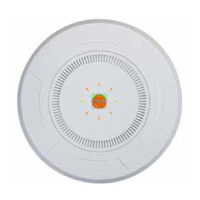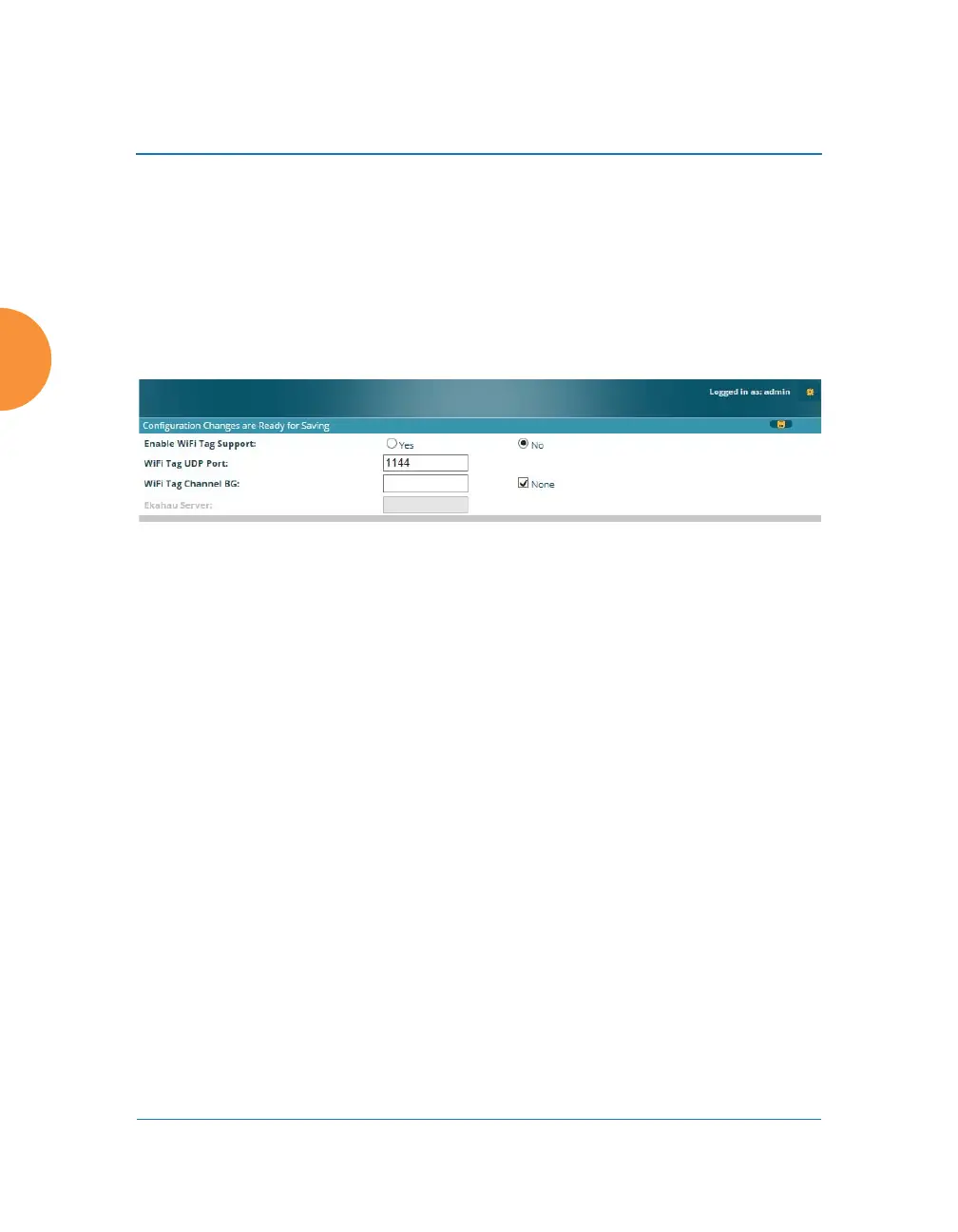Wireless Access Point
190 Configuring the Wireless AP
Wi-Fi Tag
This window enables or disables Wi-Fi tag capabilities. When enabled, the AP
listens for and collects information about Wi-Fi RFID tags sent on the designated
channel. These tags are transmitted by specialized tag devices (for example,
AeroScout or Ekahau tags). A Wi-Fi tagging server then queries the AP for a
report on the tags that it has received. The Wi-Fi tagging server uses proprietary
algorithms to determine locations for devices sending tag signals.
Figure 113. Wi-Fi Tag
Procedure for Configuring Wi-Fi Tag
1. Enable Wi-Fi Tag: Choose Yes to enable Wi-Fi tag functionality, or choose
No to disable this feature.
2. Wi-Fi Tag UDP Port: If Wi-Fi tagging is enabled, enter the UDP port that
the Wi-Fi tagging server will use to query the AP for data. When queried,
the AP will send back information on tags it has observed. For each, the
AP sends information such as the MAC address of the tag transmitting
device, and the RSSI and noise floor observed.
3. Wi-Fi Tag Channel BG: If you enabled Wi-Fi tagging, enter the 802.11
channel on which the AP will listen for tags. The tag devices must be set
up to transmit on this channel. Only one channel may be configured, and
it must be an 802.11b/g channel in the range of Channel 1 to 11.
4. Ekahau Server: If you enabled Wi-Fi tagging and you are using an
Ekahau server, enter its IP address or hostname. Ekahau Wi-Fi Tag
packets received by the AP will be encapsulated as expected by Ekahau,
and forwarded to the server.

